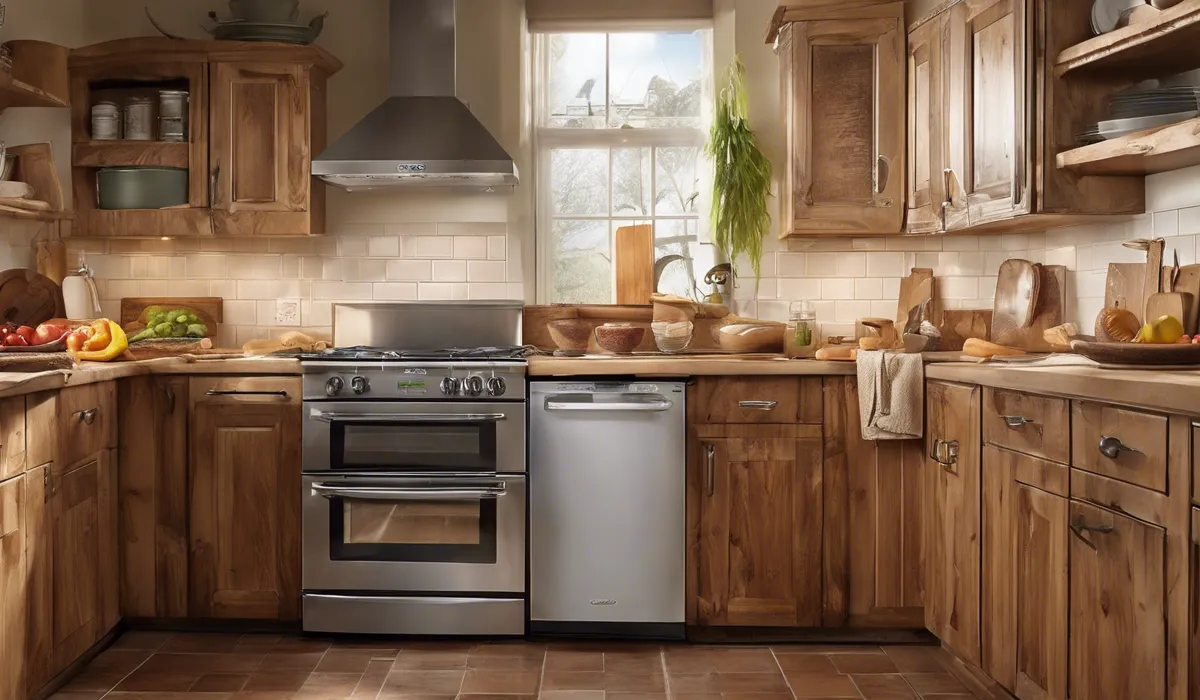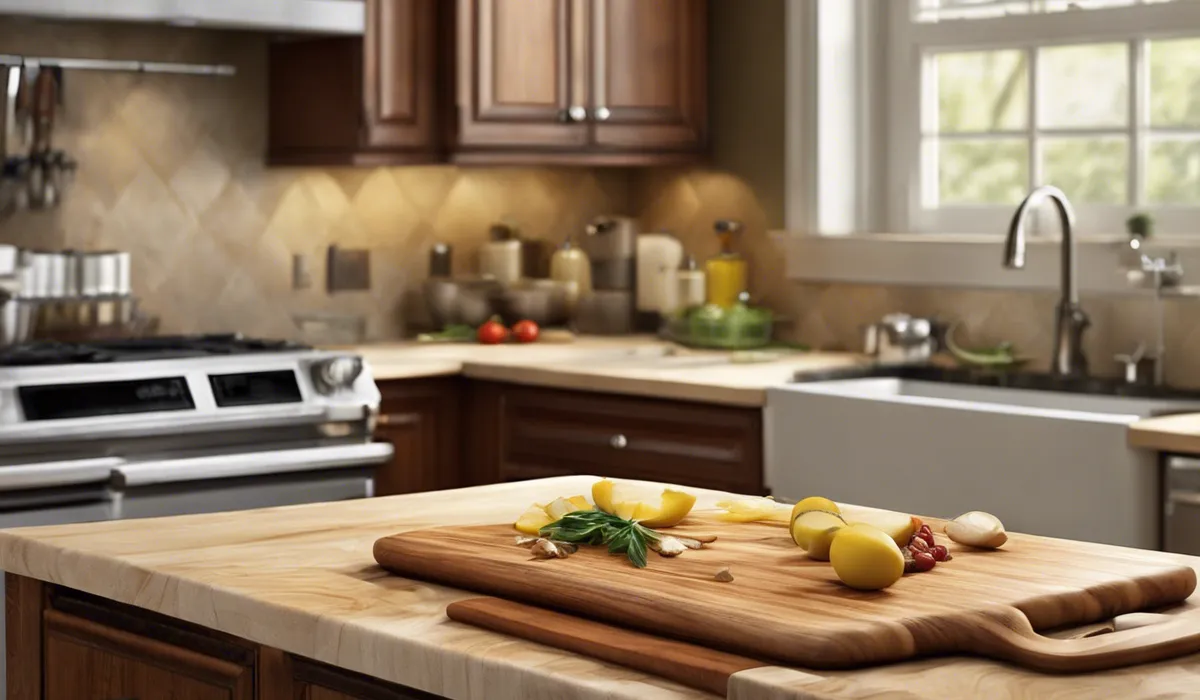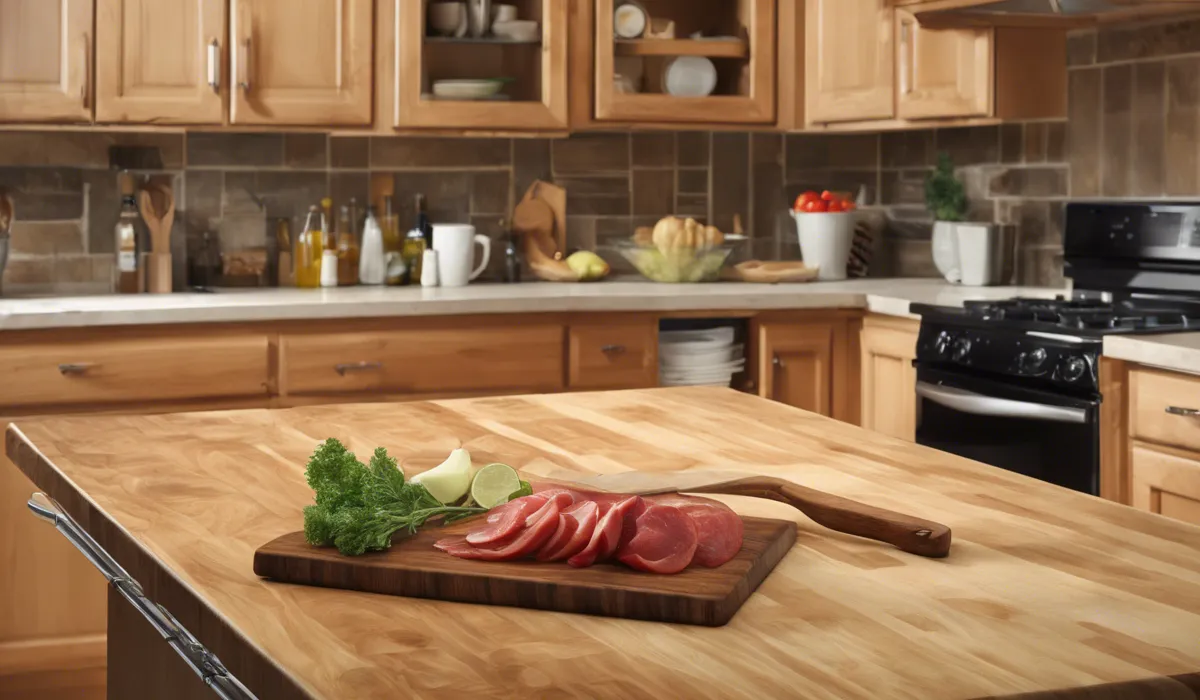Can Wood Cutting Boards Go in the Dishwasher? Risk vs. Care
No, wood cutting boards should not go in the dishwasher. The intense heat and prolonged exposure to water can cause warping, cracking, and splitting, damaging the wood. Hand washing with mild soap and drying immediately is recommended for longevity.
The Impact of Dishwashers on Wood Cutting Boards

Understanding Dishwasher Mechanics
Dishwashers clean by deploying a combination of high temperature, high-pressure water, and detergents.
The hot water, which can reach temperatures up to 75 degrees Celsius (167 degrees Fahrenheit), aids in breaking down food particles and sanitizing dishes.
The pressurized water jets effectively remove debris, while detergents dissolve fats and proteins. Together, these elements create an environment designed to clean but not necessarily protect delicate materials like wood.
The Nature of Wood Under Duress
Wood is an organic, porous material that responds to its environment. When exposed to heat and moisture, wood fibers can swell and contract.
This natural reaction is heightened in the extreme conditions within a dishwasher, leading to potential damage.
The protective oils and finishes on wood cutting boards can also be stripped away by detergents, leaving the wood vulnerable to additional wear and tear.
Potential Damage from Dishwasher Cycles
Dishwasher cycles introduce wood cutting boards to conditions that can cause warping, cracking, and splitting.
The combination of heat, moisture, and drying cycles can distort the shape of the wood, leading to an uneven cutting surface that can harbor bacteria.
Cracks and splits not only ruin the aesthetics of the board but also compromise its structural integrity.
Wood Types and Dishwasher Tolerance
Certain types of wood may resist dishwasher damage better than others. For instance, hardwoods like maple and walnut typically have a denser grain, which can offer some resistance to warping.
However, no wood is entirely immune to the harsh conditions of a dishwasher, and prolonged exposure will likely result in damage regardless of the wood type.
Proper Care and Maintenance of Wood Cutting Boards

Cleaning by Hand
Preserving wood cutting boards starts with proper cleaning. Use mild detergents and warm water to gently clean the surface after each use.
Scrubbing softly with a sponge will prevent the surface from becoming rough and prevent deep scratches where bacteria can grow.
Drying Is Crucial
After washing, it is crucial to dry the wood cutting board immediately. Standing water can penetrate the wood, causing it to swell and potentially crack.
Pat the board dry with a clean towel and then let it air dry completely in an upright position to ensure moisture is not trapped against the surface.
Regular Wood Cutting Board Maintenance
Regular maintenance is key to extending the life of a wood cutting board. Monthly oiling with a food-grade mineral oil can keep the wood supple and prevent drying and cracking.
Occasional sanding can smooth out any rough spots or grooves, and using a diluted bleach solution can help disinfect the surface.
Longevity and Dishwashers Don’t Mix
To ensure the longevity of a wood cutting board, it is best to keep it out of the dishwasher.
The intense conditions inside a dishwasher can significantly shorten the board’s lifespan, leading to the need for replacements more frequently.
Alternatives to Wood Cutting Boards for Dishwasher Users

Dishwasher-Safe Materials
For those who prefer the convenience of a dishwasher, there are alternative cutting board materials that are safe to use.
Plastic, composite, silicone, and glass cutting boards can withstand the high temperatures and pressures of a dishwasher without the damage that befalls wooden boards.
Comparing Durability and Maintenance
Plastic cutting boards are durable and easy to clean, but they can develop deep scratches over time, which can harbor bacteria.
Composite boards are made from a blend of materials and provide a tough surface that’s less prone to scratching.
Silicone cutting boards are flexible and can be easily sanitized, while glass boards are the most resistant to scratches and bacteria, though they can dull knives.
Best Practices for Dishwasher-Safe Boards
When using dishwasher-safe cutting boards, it’s best to rinse off any excess food debris before placing them in the dishwasher.
Position them securely so that the water jets can reach all surfaces. After the wash cycle, check that the boards are completely dry before storing them to prevent mildew growth.
Environmental Impact Considerations
When choosing a cutting board, consider the environmental impact of the material. Wood is a renewable resource, and when sourced sustainably, it can be an eco-friendly choice.
Plastic boards, while convenient, contribute to plastic waste if not recycled properly.
Composite and silicone options offer a middle ground, with longer lifespans than plastic and less environmental impact than glass, which requires a significant amount of energy to produce.
FAQs About Wood Cutting Boards and Dishwashers
Can wood cutting boards be washed in the dishwasher?
No, wood cutting boards should not be washed in the dishwasher due to the risk of warping, cracking, and splitting.
What damage can occur to wood cutting boards in the dishwasher?
Intense heat and prolonged exposure to water in the dishwasher can cause wood cutting boards to warp, crack, and split.
How should wood cutting boards be cleaned?
Wood cutting boards should be hand washed with mild soap and dried immediately to maintain their condition.
Is it safe to use a dishwasher for any types of cutting boards?
Yes, but only for cutting boards made of dishwasher-safe materials like plastic, not for wood cutting boards.
How can I extend the life of my wood cutting board?
To extend the life of a wood cutting board, hand wash it with mild soap and dry it immediately after each use, and regularly condition the wood with a food-safe mineral oil.
Final Thoughts
Wood cutting boards are not dishwasher-safe. The high heat and extended water exposure during a dishwasher cycle can lead to warping, cracking, and splitting, which compromises the board’s integrity.
To ensure the longevity of your wood cutting board, opt for gentle hand washing with mild soap and promptly dry it after cleaning.





